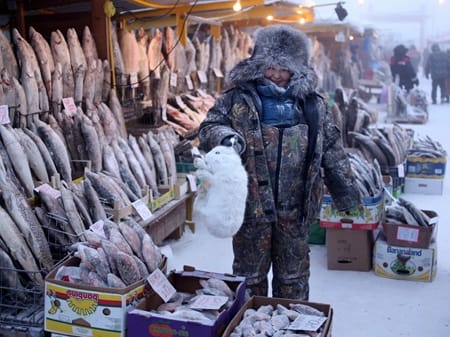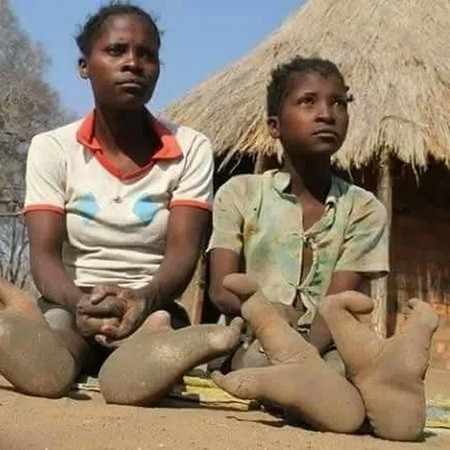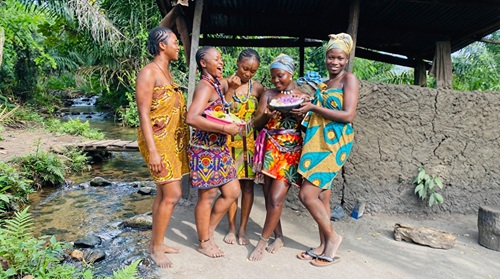Yakutsk is considered the coldest city in the world because temperatures could reach minus 80.9 degrees Fahrenheit. Yakutsk is known as the capital city of Russia’s Sakha Republic in eastern Siberia. The cold in the region can be extreme and poses danger to residents as they find it difficult to breath and take on their daily activities.
According to a report by CNN, the weather was so cold in 2018, that some residents said their eyelashes froze. In fact, residents are admonished to stay home during the winter as temperatures reach minus -40C. Universities issue advisories warning students against taking a walk out in the streets in winter.
As of 2023, Yakutsk has a population of roughly 355,500. It is popular for its mining of diamond and coal. It is also important to note that the city is built on a permafrost, a layer of frozen ground consisting of soil, gravel and sand that is usually bound together by ice under Earth’s surface. Many houses are built on concrete piles.
About the Coldest City in the World, Yakutsk
Nestled in northeastern Russia, far removed from the bustling cities of Moscow and St. Petersburg, lies a place so harsh, so unforgiving in its climate, it’s earned the title of the coldest city on Earth. This is Yakutsk — the capital of the Sakha Republic, a sprawling land of frozen rivers, diamond mines, and unrelenting cold. But this is no ghost town. With a population of over 350,000 people, Yakutsk is very much alive. And those who call it home don’t just endure the cold — they adapt, survive, and thrive in it.
A City Frozen in Time — Literally
To understand Yakutsk, you first have to understand what it means to live on permafrost. Unlike temporary winter frosts that melt come spring, permafrost is a thick, frozen layer of soil that never thaws. In Yakutsk, this means the very ground beneath the city has been frozen solid for centuries. Building on such land poses a major challenge: if you apply heat to permafrost, it melts, shifts, and destroys anything built above it. So houses and buildings here are perched on concrete stilts, raised above the earth, allowing cold air to circulate underneath. The people of Yakutsk live not just next to the cold — they live on it.
The city itself lies in the Tuymaada Valley, right on the banks of the Lena River. It’s about 280 miles south of the Arctic Circle — close enough to share its brutal climate but far enough to still see distinct seasons. Sort of.

How Cold Is Cold?
You might think you know what cold feels like. Maybe you’ve stepped outside during a snowstorm or felt the sting of wind against your face in winter. But Yakutsk operates on an entirely different scale. In January, the average low temperature sinks to -42°C (-43.6°F). And that’s average. Temperatures regularly plunge well below that, with the all-time record being -64.4°C (-83.9°F), recorded back in February of 1891.
In 2018, the weather was so cold that locals reported their eyelashes freezing within minutes of stepping outside. It’s not unusual to see frost forming around people’s mouths as they speak — or even for cellphones to stop working due to the extreme temperatures.
And it’s not just the temperature. The darkness adds another layer of intensity. During winter, Yakutsk receives less than four hours of sunlight each day. The sun barely peeks above the horizon before dipping back down again, leaving long stretches of twilight and gloom. Yet despite this, people go to work, children attend school, and life marches on.
Who Lives in This Frozen City?
The people of Yakutsk are primarily Yakuts, also known as the Sakha. They’re a Turkic ethnic group with deep roots in the region, dating back centuries. Their culture, traditions, and language have been shaped by the land — and by the cold.
Yakutian, or Sakha, is the local language, and though Russian is widely spoken, many households and communities still preserve and teach their native tongue. It’s a language full of hard consonants and long vowels, built to be spoken in freezing air. Around 450,000 people speak Yakutian, keeping the culture alive even as modernity slowly spreads across Siberia.
Getting Through Winter — One Layer at a Time
So how do you survive in a city where simply being outdoors can be dangerous?
First and foremost: layers. The people of Yakutsk wear clothing that would make a polar explorer jealous. Think long fur coats made from reindeer hide, thick felt boots lined with animal fur, oversized gloves, multiple scarves, and fur hats that cover not just the head but also the ears, neck, and parts of the face. Moving around in winter feels like stepping into battle — one where the enemy is the air itself.
Cars? They don’t get parked and left. Locals either keep their engines running or store their vehicles in heated garages. Batteries can die within minutes. Fuel can freeze. Windshields crack. That’s why most people rely on public transport or walk short distances — as long as they’re dressed for it.
Even the homes here are built like bunkers. Thick insulation, multiple layers of walls, and triple-door entry systems help keep the cold out. Most homes are heated 24/7, and electricity bills are high, but survival demands it.

The Rhythm of Life
Despite the conditions, Yakutsk is not some barren outpost. It’s a fully functional city with schools, universities, theaters, shopping malls, internet cafes, restaurants, and a thriving cultural scene. Life doesn’t pause for the cold — it adapts to it.
In fact, residents are proud of their resilience. Students still attend classes, though schools may issue warnings about spending too much time outdoors. Universities caution students against walking long distances in extreme temperatures. During the worst of the cold, people are encouraged to stay inside. But unless it hits extreme emergency levels, most businesses remain open.
People fish through holes in frozen rivers, herd reindeer, harvest ice blocks, and hunt. Many work in diamond and coal mining — key industries in the region. Agriculture exists but is limited to the brief, warm summer months, when temperatures can climb to 30°C (86°F) and the whole city is briefly bathed in green. It’s a stark contrast — one that Yakutskians look forward to each year.
Eating to Survive
Yakutian cuisine is a direct reflection of the environment. Meat and fish dominate the diet, both because of tradition and necessity. Popular dishes include:
- Stroganina — raw fish (usually whitefish or salmon), sliced thin and served frozen.
- Chochur — meat pies filled with reindeer or horse meat.
- Koumiss — a slightly alcoholic, fermented drink made from mare’s milk.
- Indigirka salad — a mix of diced frozen fish, onions, and spices.
In the brief summer months, berries are harvested and preserved to last through the winter. Food supply is a challenge. Much of what Yakutsk eats is either produced locally through small-scale agriculture or imported from outside the republic, often at high costs.
Living With the Land — and Its Perils
There’s an almost spiritual connection between the people and the land in Yakutsk. They don’t take the environment lightly — because they can’t. The land can give, but it can also take away.
Frostbite is a daily risk. Exposed skin can freeze in just a few minutes when temperatures drop below -50°C. Hypothermia is another ever-present danger. But perhaps the greatest concern in recent years is the changing climate.
Permafrost, by definition, is supposed to be permanent. But it’s not as stable as it once was. Melting permafrost threatens the very foundations of buildings, roads, and pipelines. It disrupts ecosystems, exposes ancient pathogens, and releases methane — a potent greenhouse gas.
The irony is hard to ignore: Yakutsk, a city that has survived the coldest temperatures on Earth, is now facing danger from a warming planet.
And Yet, They Stay
So why do people stay in Yakutsk? Why not move somewhere warmer, safer, easier?
For many, Yakutsk isn’t just a place — it’s home. It’s where their ancestors lived. Where their language is spoken. Where traditions still thrive. The cold, while harsh, is also part of their identity. It has shaped their culture, their community, and their sense of endurance.
Yakutsk is not for the faint of heart. But for those who live there, it’s a place of strength, resilience, and incredible beauty. In the deep freeze of winter, under skies streaked with auroras and stars, the people of Yakutsk carry on — one frozen breath at a time.
This is what it means to survive in the coldest city on Earth.





